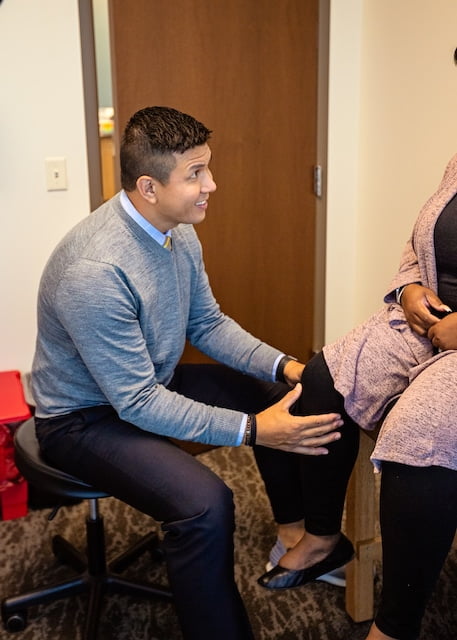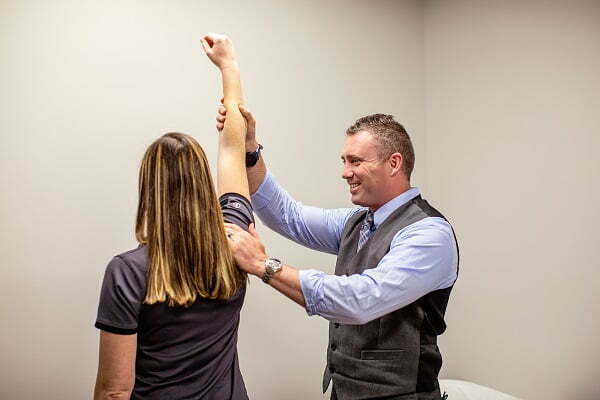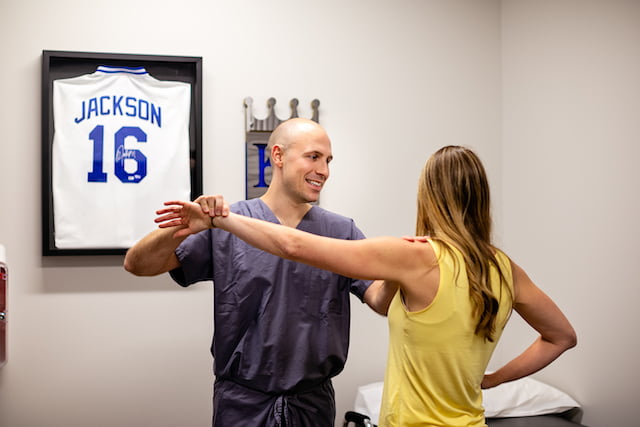Orthopedics 101
The musculoskeletal system is a complex system that includes the bones, muscles, cartilage, tendons, ligaments, and joints in your body. These all work together to support your body’s weight, stability and movement. Orthopedic Physicians specialize in the diagnosis, treatment, prevention, and rehabilitation of musculoskeletal conditions. Musculoskeletal conditions include a wide range of conditions, including osteoarthritis, fractures, ligament sprains, back pain, carpal tunnel, and so much more.
We answer some common questions in this Orthopedics 101.
Are all orthopedic physicians surgeons?
Orthopedic surgeons are doctors who specialize in the musculoskeletal system. Non-surgical orthopedists can assess, diagnose, and treat your orthopedic ailment using non-invasive treatments. And just because orthopedic surgeons are qualified to operate doesn’t mean they will. Conservative treatment is usually the first consideration for healing most orthopedic injuries. At Sano, we look at ourselves as managers of musculoskeletal health, considering our patients’ well-being for the near term and future.
Because of the orthopedics wide range of conditions, most orthopedic surgeons sub-specialize, focusing on specific areas to increase focus and improve outcomes for their patients with high repetitive experience.
How many years of training are required to be an orthopedic surgeon?
Orthopedic Surgeons must complete 4 years of undergraduate school, 4 years of medical school, 5 years of residency, and an optional 1+ years of fellowship to specialize. This 14 to 15 years is the most direct path of choosing to be a physician early in undergraduate school.
To be board-certified, a physician must complete medical school and residency. Physicians must pass a written exam and then a clinical exam. In order to take the clinical exam, which includes submission of surgical cases for review, surgeons must have completed a certain number of surgeries.
What’s the difference between MD and DO Physicians?
Both an MD and DO are medical degrees that mean the doctor is a licensed physician with the same 14-15 years of training and testing requirements. An MD Orthopedic Surgeon is a doctor of allopathic medicine, which refers to classical medical training focused on diagnosis/treatment of disease. A DO Orthopedic Surgeon is a doctor of osteopathic medicine, which trains students on a holistic view of the patient. Medical students attending osteopathic schools (DOs) must take an additional 200 hours of training learning manipulation techniques of the musculoskeletal system. At Sano, we have both MD and DO Orthopedic Surgeons.
Kansas City University (KCU) is a large DO medical university located in downtown Kansas City, so our metro has a large number of DO physicians practicing within the city limits.

Orthopedic vs Orthopaedic
Orthopaedic has the exact same meaning as orthopedic. The only difference is that orthopaedic is the standard spelling in British English.
At Sano, we use and prefer orthopedic.
What’s the Difference Between Acute and Chronic Injuries?
An acute injury happens suddenly and is typically associated with trauma. With a chronic injury, symptoms gradually worsen over time.
Examples of acute injuries include ankle sprains, dislocated fingers, clavicle fractures. Carpal tunnel syndrome, golfer’s elbow, shin splints, and Achilles tendonitis are examples of chronic orthopedic pain. The American Journal of Sports Medicine actually defines acute vs chronic based on the type of injury.
The treatment options for acute and chronic injuries overlap. Conservative treatments, such as resting, physical therapy anti-inflammatory medicine, may be recommended for chronic and acute pain, depending on the injury and patient. Some acute injuries will require surgery to return to full function, and chronic pain may also require surgery when conservative treatment fails. In some cases, wear and tear from overuse injuries can set the stage for acute injuries. An accurate diagnosis sets the stage for a personalized treatment plan.
What is a Physician Associate?
Physician Associates, or PAs, obtain an undergraduate degree and then complete 2 years in a physician assistant program. Most of these PA programs require applicants to have medical experience in order to apply. Both doctors and physician assistants must complete continuing education courses.
Physician Associates act under the supervision of a doctor. They work alongside our surgeon team to provide quality care for our patients. At Sano, both Nurse Practitioners and Physician Associates assist our physicians in clinic and surgery. As a group, we refer to them as Advanced Practice Providers or Mid-Level Providers.
Meet Our Advanced Practice Providers
Physician Associates and Nurse Practitioners
Meet Our Physicians
Surgeons and Physicians


